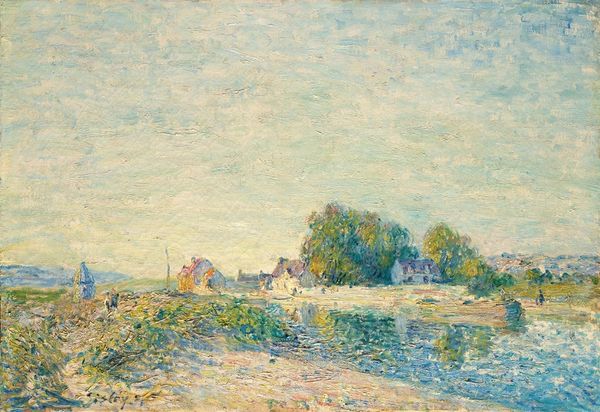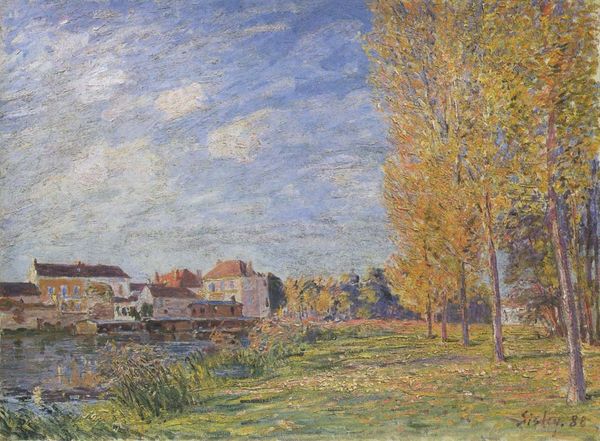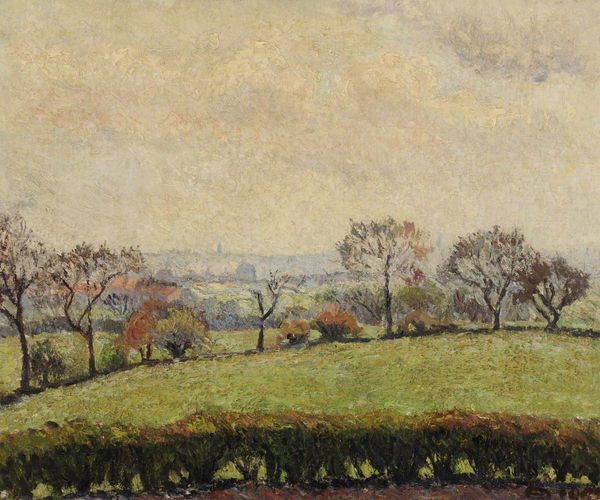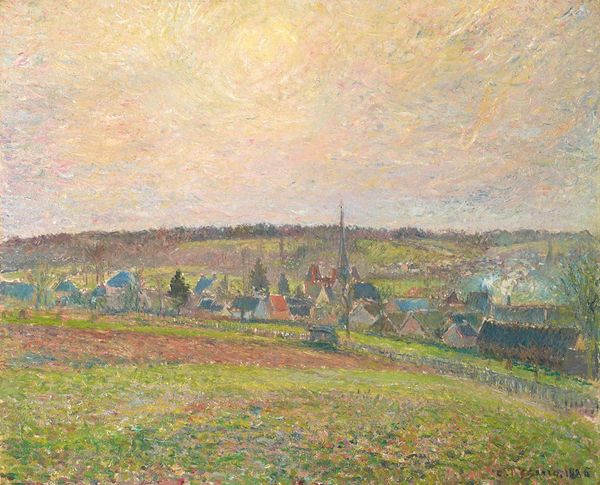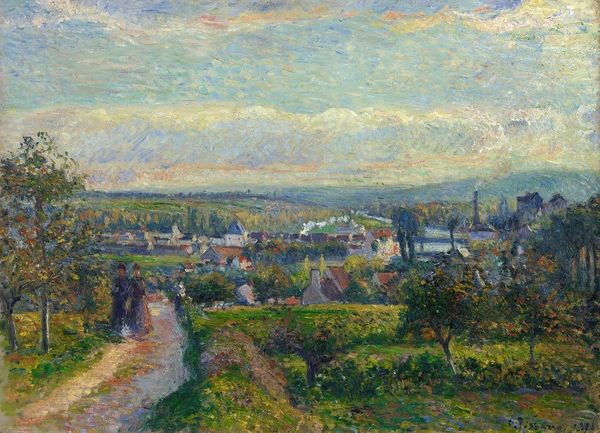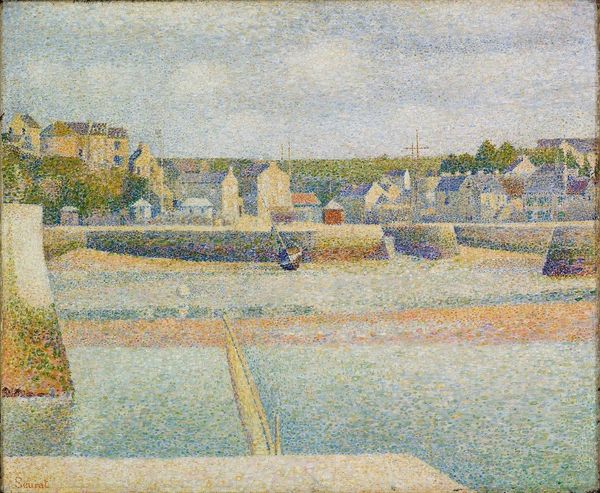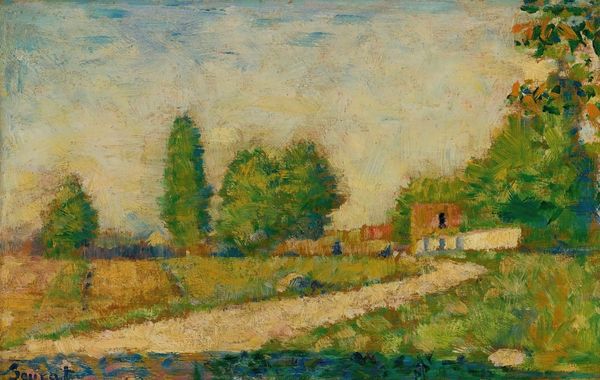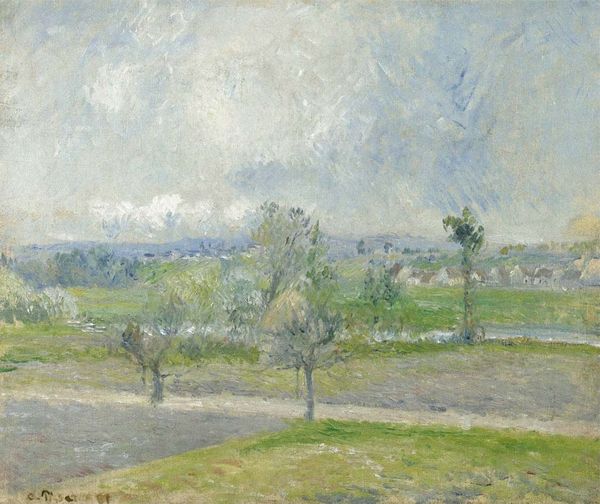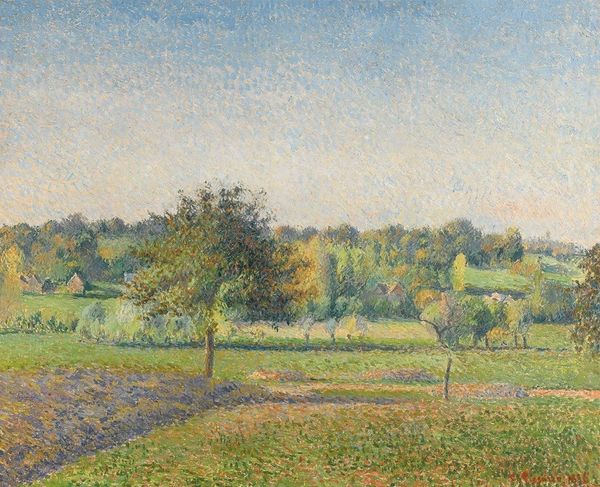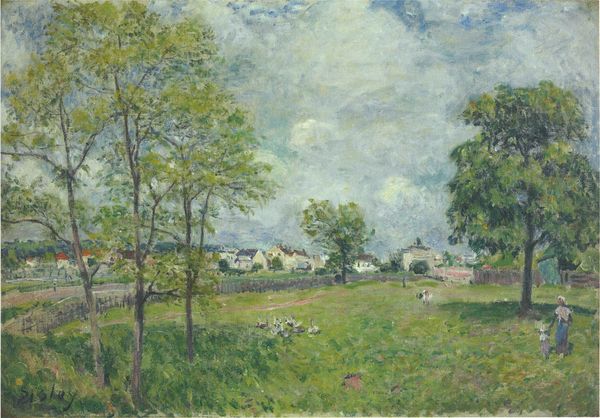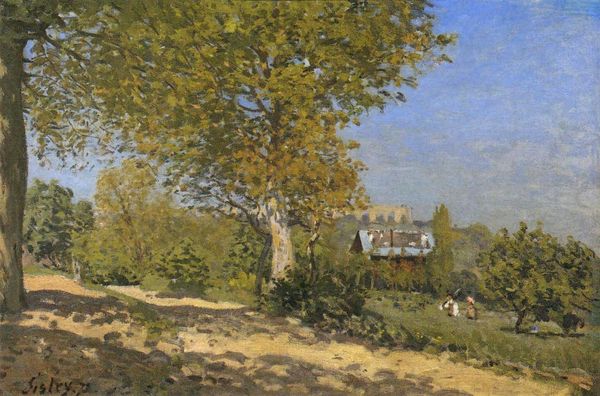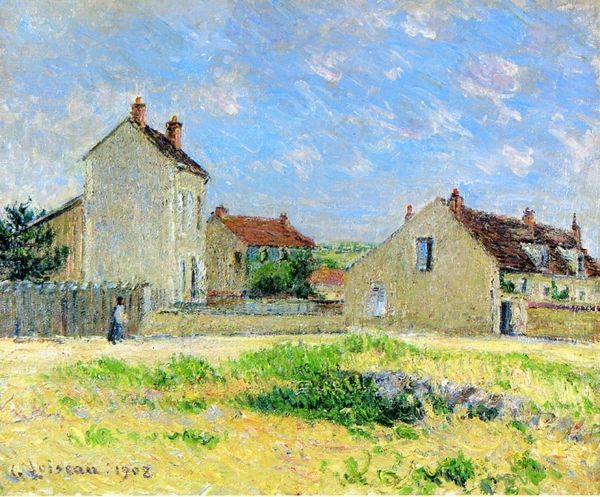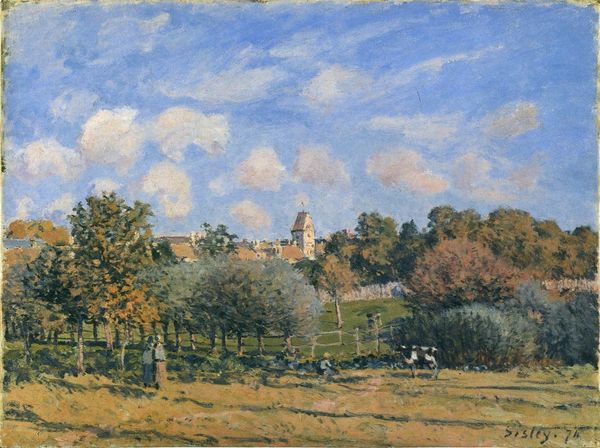
Copyright: Public domain
Curator: Lucien Pissarro painted this oil on canvas in 1892. It's titled "Vue d'Eragny," a depiction of the French countryside where he spent a significant part of his career. Editor: There’s a softness to it; it’s as if the entire landscape has been woven together. The brushstrokes themselves are so visible. Curator: Pissarro’s exploration of rural life positions the laboring body, perhaps hidden in the landscape itself, as an integral element to understanding Impressionist paintings. We see a shift, facilitated by broader discussions of labor at the time, that expands the notion of modern life from exclusively Parisian or urban scenarios. Editor: I notice the almost tapestry-like quality that the application of oil gives the field, like a textured weaving of rural industry. Did the artist embrace any specific, perhaps handmade, preparation techniques for his canvases? Curator: Pissarro would have prepared his surfaces, likely employing methods not too dissimilar from craft traditions handed down through generations. We have to consider his involvement within the Arts and Crafts movement too, making art more accessible and connected to everyday lives, countering what was happening in academies. Editor: Interesting how his commitment extends beyond just subject matter, but permeates through every layer of the canvas, down to preparation techniques. Curator: Precisely. This pursuit mirrors an effort to democratize both the means and subjects of artistic creation. Editor: The geometry of the buildings feels less constructed than integrated within the horizon itself, thanks to similar tones and that overall feeling of the scene gently dissolving at the edges. Curator: Eragny served as both home and a crucial source of inspiration. Viewing these paintings in relation to broader intellectual currents opens paths for new analysis. Editor: Absolutely, the emphasis on materiality makes me question assumptions about how pastoral scenes translate themes of industry, production, and lived reality. I can appreciate the intersection between hand-crafted canvas, industrial pigments and his overall representation of provincial existence. Curator: By understanding not just the aesthetics but also the sociopolitical undertones, we uncover so much more within it. Editor: A landscape transformed from something idyllic to something deeply rooted in its historical moment through its materials and techniques.
Comments
No comments
Be the first to comment and join the conversation on the ultimate creative platform.
